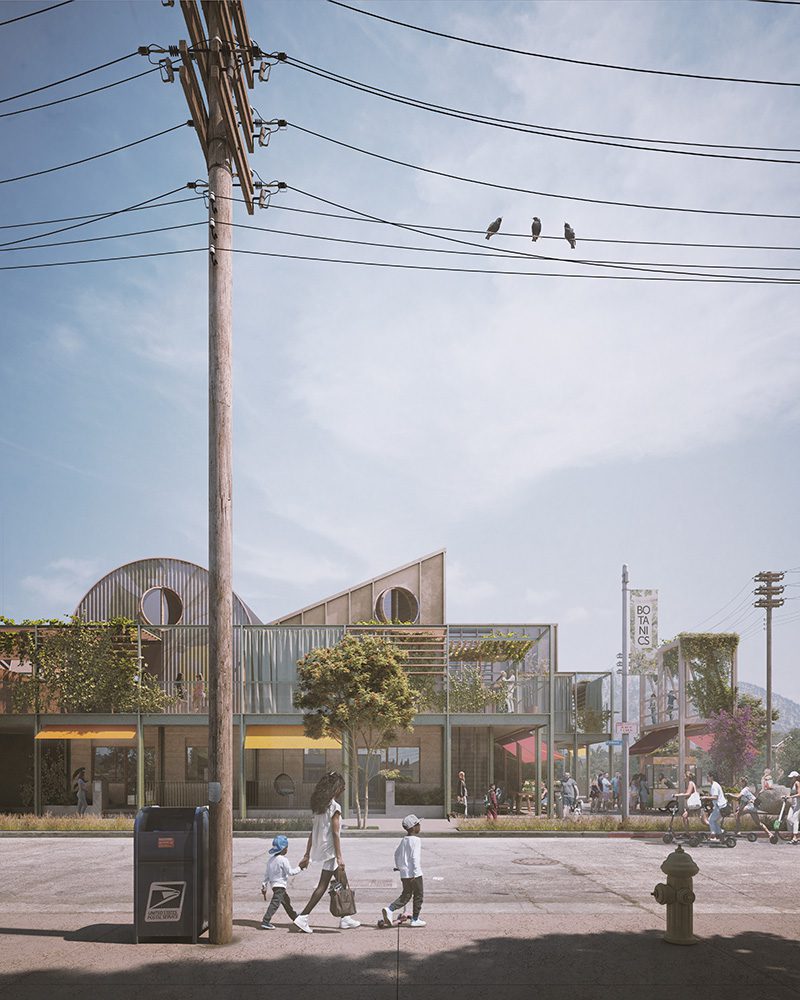
Grow-Rise
Courtyard housing for the healthy, productive and sociable densification of suburban Los Angeles. A collaboration with Morris+Company.
LA: Low-Rise Competition
LA: Low-Rise: Housing Ideas for Los Angeles competition, organised by the city’s Chief Design Officer in collaboration with the Mayor’s Office of Budget and Innovation, invited entries which explore new typologies for densifying the real and imagined sites which typify the very specific suburban condition of the city.
The Brief
“For much of the 20th century in Los Angeles, and particularly in the decades following World War II, architectural experimentation as well as efforts to boost household wealth and upward mobility focused on the same location: the single-family house.
With Los Angeles having run out of room to sprawl, and out of new empty parcels of land to conquer with single-family subdivisions, the standalone house has become more a place to protect wealth than to begin building it. The many huge wildfires that have burned across Southern California and the West this year, threatening residential communities edging dangerously close to the wildland-urban interface, are only the latest stark reminder that Los Angeles needs to redouble its efforts to build housing more sustainably and locate it more strategically.
Thankfully, a solution seems clearly at hand: in L.A.’s low-rise neighborhoods, pursue well-designed new models of residential architecture in the range of three to four units (or six to eight across two adjacent lots), filling one or two stories. From an ecological, economic, and architectural perspective, housing at this scale has a great deal to recommend it. We know that multifamily projects of one and two stories are the least expensive housing we can build on a per-unit basis and that they hold the promise of bending the affordability curve more effectively than other new residential projects. There is a strong sustainability case to be made for this housing as well, given that an intelligently designed fourplex may well use the same or less energy and water than a large single-family residence on the same lot.
The COVID-19 pandemic has only made the appeal of housing at this scale easier to see. While it’s crucial to add to the city’s housing stock in every neighborhood, we must find ways to do so without promoting the kind of overcrowding that can promote the easy spread of the coronavirus and other threats to public health. Low-rise multifamily housing offers a way to add units at a significant volume while also providing immediate access to gardens and other shared outdoor spaces, where socializing is less dangerous than interiors when it comes to COVID-19. It gives residents places to quarantine — in second, third, or fourth units separate from a main house, for example — without leaving the household or neighborhood altogether.”
Our Response
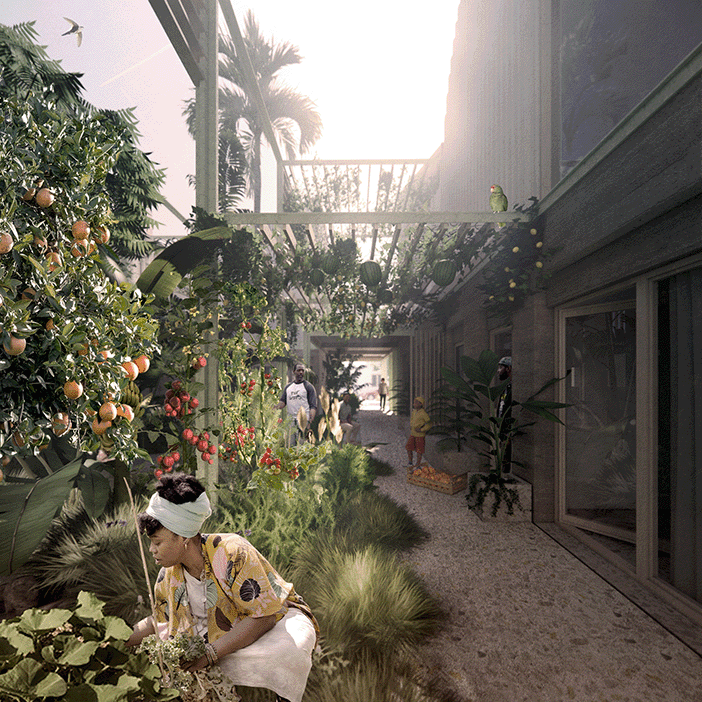
Grow-Rise
Welcome to Eureka and Ponderosa, an imagined intersection, growing and nourishing a new community and existing neighbourhood in the contested flatlands of suburban Los Angeles.
At the heart of our proposal for eight homes and retail space sits a productive communal garden from which all eight homes are accessed. On the street corner, an adaptive public outdoor space, managed by the resident group and equipped with stands for exchange and enterprise, allows the social, physical and wellbeing benefits derived from the growing and sharing of produce within our new community to be extended to the neighbourhood beyond.
Grow-Rise evolves the arrangement of the popular ‘bungalow court’ typology to create larger and more varied accommodation over two storeys, with clear design principles permitting reconfigured responses to specific site conditions, resident groups and localities. Orientation, the size and mix of homes, degrees of privacy and parking requirements are easily adjusted using these principles.
A holistic approach to landscape integrates productivity, social connection and play with careful water management. Stormwater, collected in bioswales and porous pavements at the perimeter of the site, supports the evaporative and shade-giving planting which maintain a cooler climate in the shared garden and ground level of the homes.
On the ground storey, but raised a little above the public realm, entrances and sleeping spaces are located in the cooler shade of the upper decks and vegetation. Upstairs, double-height living spaces, with openings at high level to allow for the escape of warm air when appropriate, open onto a private outdoor decks for every household. Generous hallways allow for easy movement from the perimeter of the site to its interior garden, and for the installation of an elevator should residents choose to ‘age in place’ or face mobility challenges.
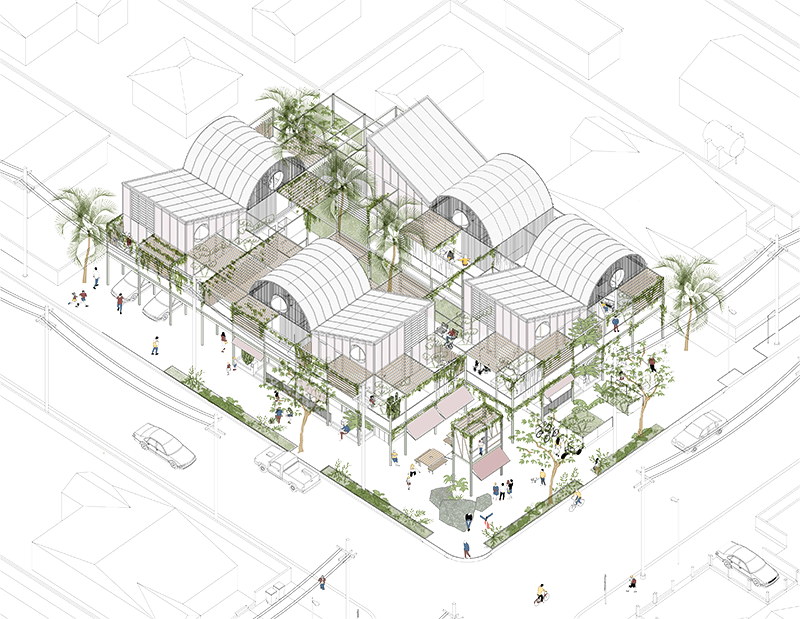
An external steel frame performs multiple functions – on the corner, cover is provided to the shared entrance and to public and commercial activity; and where homes meet the street, it becomes a veranda. Elsewhere on the ground floor, vehicles, refuse, cycle storage and the infrastructure required to charge electric vehicles are all contained within the structure. Most importantly, the frame further shades the ground story to assist in keeping those spaces cool.
On the upper level, a more slender frame fulfils numerous requirements – supporting more planting, shading louvers and perimeter guardrails. It also allows for more personalised or improvised uses, which might include swings and exercise equipment, or facilities for the drying of clothes or produce. At this level, privacy between homes is managed through the configuration of fixed elements, but can also be adjusted to suit through the addition of canopies, curtains and planting. Over time, the frame becomes what the residents need it to be.
Looking to a decarbonised future, we aim to use as many materials as possible which come from the biosphere or which can be reused beyond the life of the building, with future deconstruction and reuse considered at the outset. Homes will be constructed from heavy rammed earth to provide thermal mass at the cooler lower level, with hemp-filled cassettes and timber and corrugated natural-fibre cladding used for the upper storey. Natural internal finishes will promote healthy air quality. Heating and cooling will be provided by air-source heat pumps combined with a heat recovery system, with electricity collected by photovoltaic panels on roofs organised for solar orientation. Beneath the internal garden, a comprehensive water management system will collect rainwater for domestic use, and stormwater and grey water for growing.
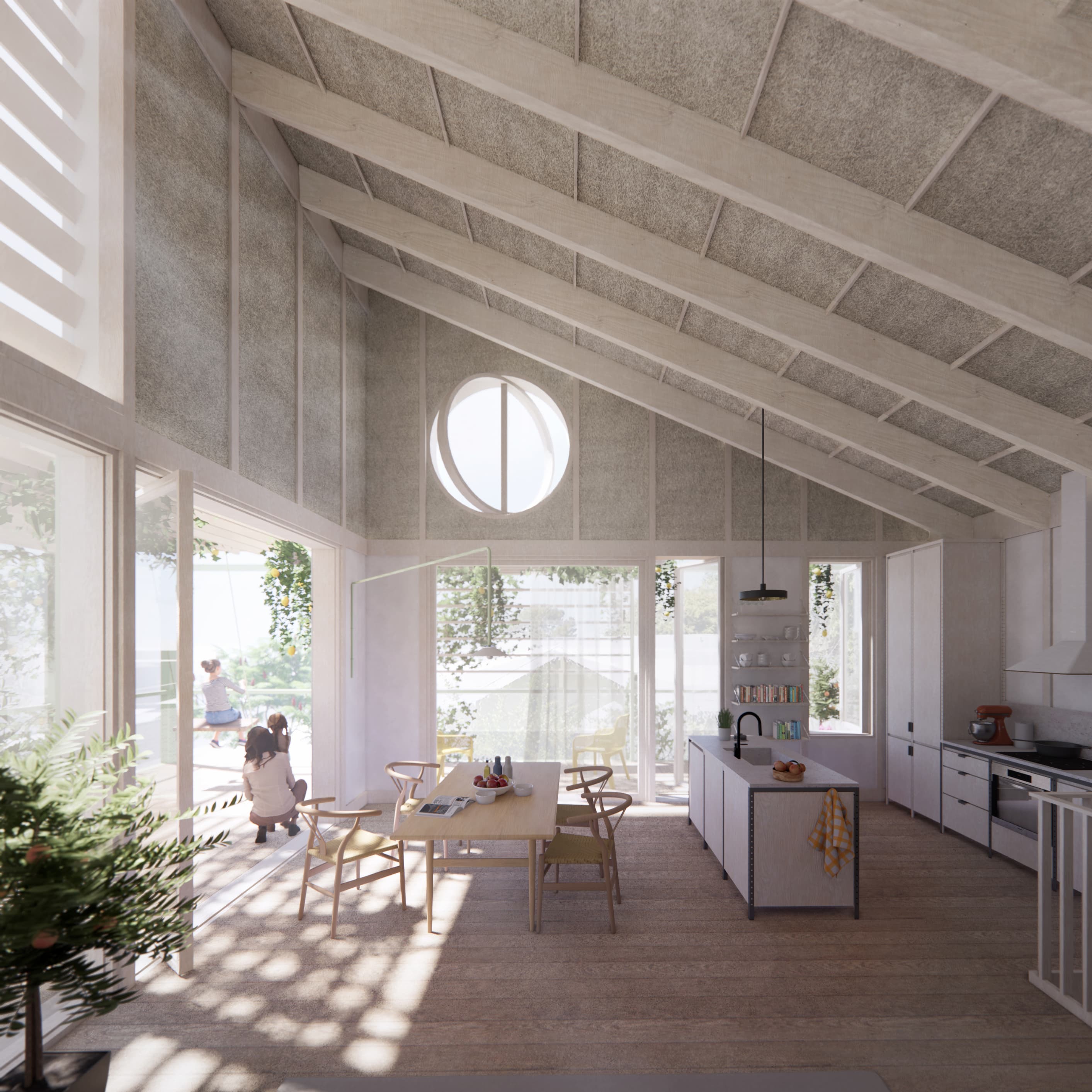
An external steel frame performs multiple functions – on the corner, cover is provided to the shared entrance and to public and commercial activity; and where homes meet the street, it becomes a veranda. Elsewhere on the ground floor, vehicles, refuse, cycle storage and the infrastructure required to charge electric vehicles are all contained within the structure. Most importantly, the frame further shades the ground story to assist in keeping those spaces cool.
On the upper level, a more slender frame fulfils numerous requirements – supporting more planting, shading louvers and perimeter guardrails. It also allows for more personalised or improvised uses, which might include swings and exercise equipment, or facilities for the drying of clothes or produce. At this level, privacy between homes is managed through the configuration of fixed elements, but can also be adjusted to suit through the addition of canopies, curtains and planting. Over time, the frame becomes what the residents need it to be.
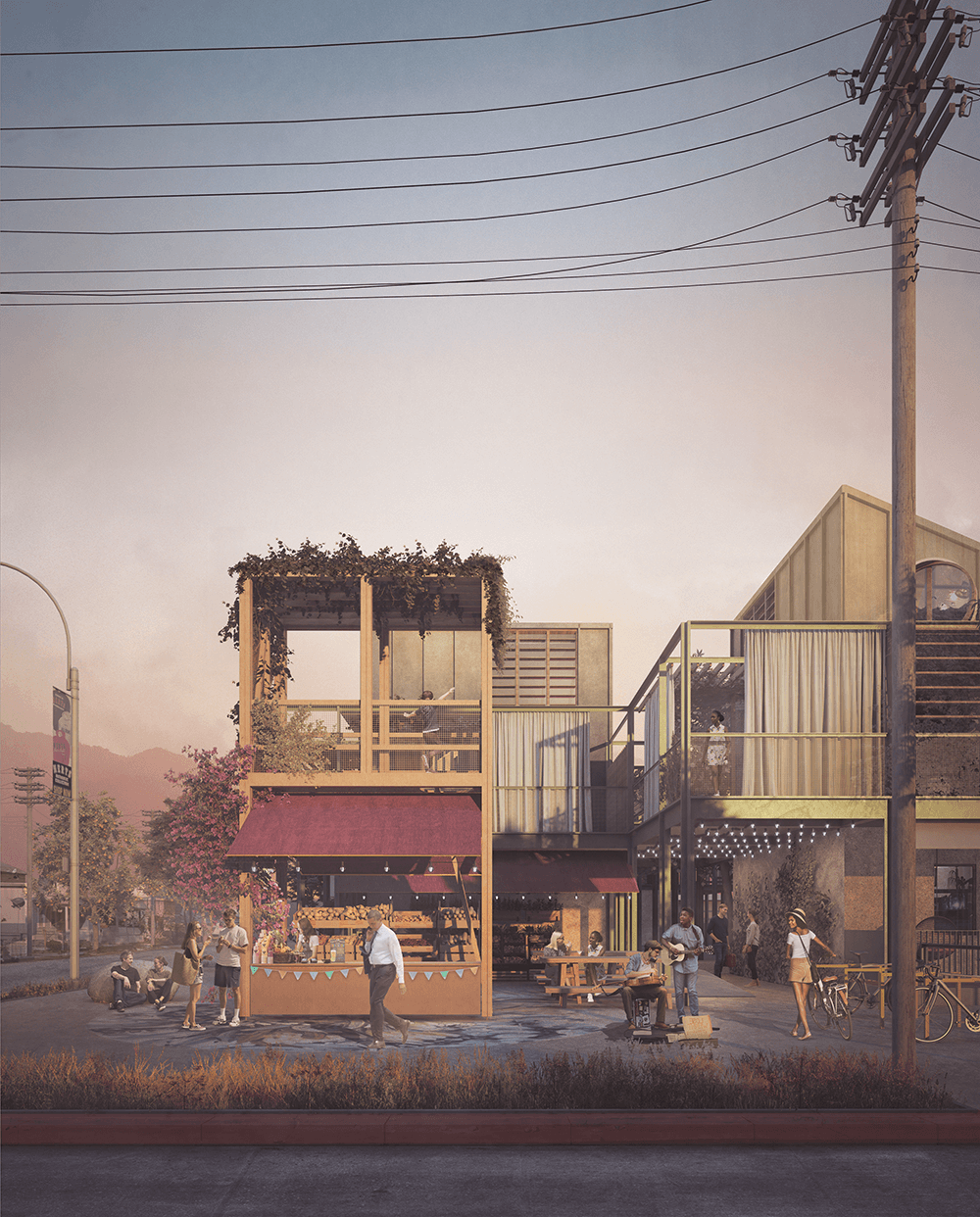
As embodied by the highly visible ‘lemonade stand’ at the corner, this proposal seeks to make connections and build relationships; between new residents, and with the surrounding neighbourhood. An electric cargo bike is used by residents and volunteers to distribute produce to those who are busy or less mobile. Social media and web-based technologies are harnessed to build a local customer base who can contribute towards defining the offer and are alerted when the pomegranates are harvested or a volunteer is required. Through collective cultivation and opportunities for public interaction, the activity of the corner becomes both the connective tissue of the new community within, and a place for the wider neighbourhood to coincide.